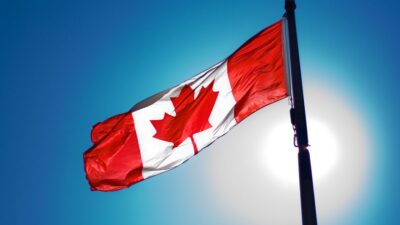the CanadaVisa Team - 26 June, 2020


The Express Entry year-end report for the year of 2019 was released by Immigration, Refugees and Citizenship Canada (IRCC), detailing some interesting findings.
A total of 332,331 Express Entry profiles were submitted in 2019, a 20% increase from the previous year. Of these profiles 72% were eligible for one of the federal immigration programs.
Among the eligible profiles, 69% had not claimed any additional points.
In certain scenarios, additional Comprehensive Ranking System (CRS) points are granted. For example, an individual with a provincial nomination receives an additional 600 CRS points. Those with arranged employment receive an additional 50 or 200 points. Candidates with a Canadian degree, French language proficiency or who have a sibling in Canada can also claim additional points.
The most common claims for additional points were made for having graduated from a Canadian school (13%) or for having a sibling in Canada (12%).
Another point of interest is the distribution of the CRS scores of candidates in the Express Entry pool.
On January 29, 2020, there were a total of 49,048 candidates with a CRS score between 350 and 399, and a total of 41,128 with a CRS score of 400-449.
A further 20,326 candidates had CRS scores of 450-499, and 30,399 candidates had scores below 350.
The CRS cutoff for the Express Entry draws in 2019 (except program-specific draws) were between 438 and 475.
The total number of invitations issued by IRCC in 2019 was 85,300.
Just under half of the total invitations were under the Federal Skilled Worker Program (FSWP). About a third were invited under the Canadian Experience Class (CEC). About a fifth were invited under the Provincial Nominee Program (PNP).
Most of the invitations were issued to candidates aged between 20 and 34 (86%). Most candidates also had an undergraduate degree (at least three years long) or higher (90%).
In addition, the most common primary occupations of the candidates invited were software engineers and designers (NOC 2173), information systems analysts and consultants (NOC 2171) and computer programmers and interactive media developers (NOC 2174). Other common occupations were in finance, business, marketing and engineering.
Among candidates who received an Invitation to Apply (ITA), the most common countries of citizenship were India, Nigeria, China, Pakistan and the United Kingdom. India alone accounted for almost half of all the candidates who received invitations.
As you would expect, the majority admitted candidates were destined for Ontario. These candidates account for around 64% (that is 69,969 candidates). The second most popular destination was British Columbia, accounting for a further 18% (20,064 candidates).
Things changed in 2020. Ever since coronavirus became a threat to the safety of the Canadian population, certain special measures were taken into account, for example restrictions to non-essential travel.
Regular draws that were previously held every two weeks and included all programs no longer were held. Instead, Express Entry draws were now held sporadically, sometimes within days or hours of each other.
For this reason, there have been a total of 21 draws so far in 2020. To put that into context, by the same time last year, there were only 12 draws held. The latest draw was the June 25 Express Entry draw that invited 3,508 CEC-only candidates. This draw followed the PNP-only draw the previous day that saw 392 candidates invited.
Canada has so far issued a total of 49,900 invitations to apply for permanent residence.
Despite the coronavirus pandemic and the travel restrictions in place, that number exceeds the number of invitations issued by the same time last year.
For this reason, Express Entry is expected to remain strong in the second half of 2020.